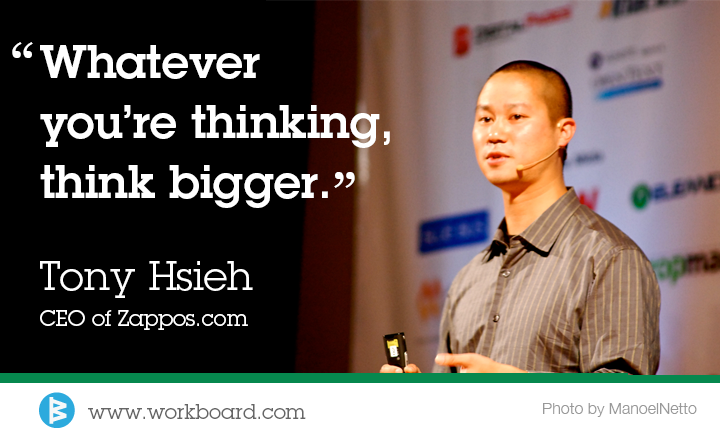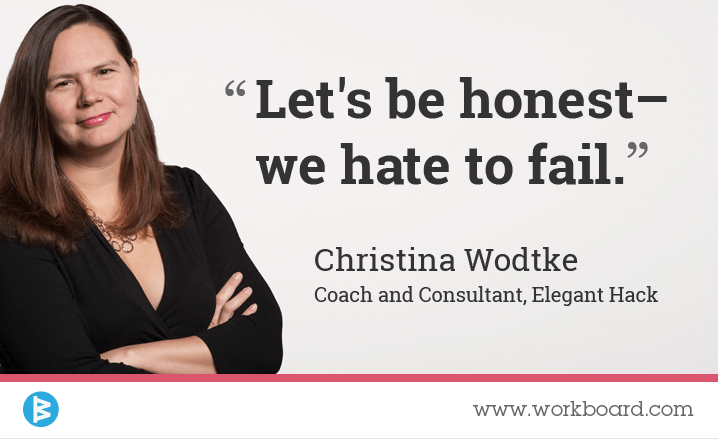
Objectives and Key Results or OKRs have helped hyper-growth Internet companies like Google achieve phenomenal success. They combine ambitious, qualitative goals and quantitative success measures with weekly execution and accountability cadence. When teams institutionalize OKRs, they enjoy clarity of purpose, fast-paced progress, and can achieve game-changing results. Use OKRs to embolden your goals, define how success is measured and achieve execution excellence:
1. Define Ambitious and Inspiring Objectives
Create qualitative objectives. The objective is your team’s mission – it becomes personal, inspires people and provides shared purpose. Objectives should be for a set period of time and achievable by your team (not dependent on others). To increase engagement, use words the team itself would use rather than corporate speak. “Launch 2.0 product customers LOVE” is more inspiring than “release v2.0” and puts the emphasis on the impact of the product; the former invites the team on a mission to greatness, while the latter tells them the mechanical process is all you’re after. Re-think how your goals are expressed: can you frame them to inspire the people on your team?
2. Quantify Key Results
Key results are the target metrics that prove you've achieved the objective and how the team will know IT has succeeded.
What’s unique about the OKR approach is that it focuses on achieving great rather than predictable results. KRs should be a reach, not a slam dunk. KRs are quantitative results from your efforts, and there are typically several such as revenue, performance, engagement, quality or growth. How will “customer love” be measured? When 25% of customers refer their friends, 40% use the product more than 6x a day, and 30% expand use to adjacent products within 30 days are results that might signal customers love the new product. How would you define key results for ambitious objectives that feel just out of reach but with real effort, the team just might make it happen?
3. Execute Like Crazy
Make OKRs part of a weekly execution cadence and give everyone transparency to OKR achievement. Each week, identify the priority deliverables and who is responsible for them; don’t get lost (or procrastinate) in the minutiae! Focus on the major outcomes, and constrain the week’s plan to the real priorities. Use weekly status reports to track and communicate status of these deliverables and confidence ratings on hitting the KRs. In status reports include the prior week’s outcomes, the priority deliverables for the current week, blocker items, and the priorities you need to address the following week. If you’re managing the team, use reports to ensure the team is executing high priorities rather than the infinite distractions that tempt us all.
Finally, don’t lower or abandon the metrics when it looks like you may fail; get as close as you can and learn from the stretch. You’ll find out what the team is capable of when it goes for gold… And you may even get the gold!
4. Inspired Culture
Going for gold takes tremendous passion and tenacity. But it also takes a lot of experience not winning the gold, missing the podium or just getting the bronze. Create an environment that inspires people to pursue the gold medal but celebrates the bronze and silver. Foster and reward champion effort, continuous learning, and the drive to miss the medal but continue to compete. Setting bold, ambitious goals with stretch metrics means you’ll surprise yourself with greatness but you’ll also miss the mark – so celebrate striving.
Inspired teams with ambitious goals who feel accountable to each other can achieve tremendous results. Getting the objectives and key results right takes iteration and self awareness from the team, but the effort pays off when the team is full engaged in the mission and striving for greatness. Try OKRs with your team for Q1 and Q2 and see what you can do!
— The Velocity Gurus @ WorkBoard
P.S. WorkBoard is an excellent way to clarify and achieve OKRs and make your success more transparent. Learn how WorkBoard can help you quickly institutionalize a more agile goal process.
More on Tony Hsieh:
For an engaging story on inspired culture, bold goal achievement and tenacity, check out Tony Hsieh’s book Delivering Happiness. He co-founded and led LinkExchange, which he sold to Microsoft for $265 million in 1998 before he was 30. He was CEO and funded Zappos, which grew to $1 billion in sales in 10 years and Amazon acquired for $1.25 billion in 2009. The book is chock full of stories of fearless goal setting and tremendous achievement.










